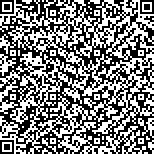| 摘要: |
| 海洋中的有害藻华,包括微藻形成的赤潮和褐潮以及大型藻类形成的绿潮和金潮,已成为一类突出的海洋生态灾害问题。2021年11—12月,山东半岛东北部海域发生多纹膝沟藻(Gonyaulax polygramma)形成的大规模赤潮,导致海带养殖严重受损,亟待构建有针对性的赤潮监测预警体系。本文以多纹膝沟藻为对象,尝试应用流式影像仪(FlowCam)结合卷积神经网络模型YOLOv3,分别对含有多纹膝沟藻的浓缩海水样品、含有多纹膝沟藻和链状亚历山大藻(Alexandrium catenella)的浓缩海水样品,以及含有多纹膝沟藻活细胞及空壳的浓缩海水样品进行了检测实验,探究了基于藻种影像的深度学习模型在赤潮原因种检测方面的应用潜力。结果表明,在以FlowCam获取的影像数据集训练3万次后,YOLOv3对多纹膝沟藻表现出较好的识别能力,对浓缩海水样品中目标藻种识别的平均精度为88.2%;当样品中存在与多纹膝沟藻形态相似的链状亚历山大藻时,模型对多纹膝沟藻识别的平均精度下降为76.6%,对两种微藻同时进行训练和检测,可将对多纹膝沟藻识别的平均精度提高至84.6%。对于低温下出现脱壳现象的多纹膝沟藻,模型对海水中活细胞识别的平均精度为86.7%,对空壳识别的平均精度87.8%,将多纹膝沟藻活细胞与空壳分别识别的平均精度均值(87.3%)高于将两者统一作为多纹膝沟藻进行检测的识别精度(84.2%),整体识别精度提升3.1%。综合相关结果可以看出,FlowCam与深度学习模型相结合在赤潮监测和研究中具有重要应用潜力。 |
| 关键词: 深度学习 FlowCam 有害藻华 多纹膝沟藻 微藻检测 |
| DOI:10.11759/hykx20230511001 |
| 分类号:S917.4 |
| 基金项目:科技部重点研发项目(2022YFC3105200), 自然科学基金委面上项目(42106206), 国家科技基础资源调查项目 (2018FY100200) |
|
| Detection of Gonyaulax polygramma using FlowCam and YOLOv3 model |
|
LIU Yang1,2, KONG Fanzhou2, YU Rencheng2,3, CHU Yongbao1
|
|
1.College of Environment and Safety Engineering, Qingdao University of Science and Technology, Qingdao 266042, China;2.CAS Key Laboratory of Marine Ecology and Environmental Sciences, Institute of Oceanology, Chinese Academy of Sciences, Qingdao 266071, China;3.University of Chinese Academy of Sciences, Beijing 100049, China
|
| Abstract: |
| Harmful algal blooms in the sea, including red or brown tides formed by microalgae and green or golden tides formed by macroalgae, have become a prominent marine ecological disaster. During November–December 2021, a large-scale red tide was formed by dinoflagellate Gonyaulax polygramma in the coastal waters northeast of the Shandong Peninsula, causing severe damage to the cultivated kelp Saccharina japonica. Therefore, developing efficient red tide monitoring and early-warning systems is necessary. Considering G. polygramma as the object, FlowCam was combined with convolutional neural network (CNN) model YOLOv3 in this study to analyze three simulated samples primarily containing G. polygramma, G. polygramma, and Alexandrium catenella, and live cells and theca of G. polygramma. Herein, the potential of a deep learning model for the identification of target microalgae based on FlowCam images for detecting red tide species was explored. According to the results, YOLOv3 showed a good recognition ability for G. polygramma after training with 30, 000 batches of the image datasets obtained using FlowCam. The average detection precision for G. polygramma in the simulated seawater sample was 88.2%. When A. catenella was present in the sample as interference, the average precision of the model decreased to 76.6%. Training and detecting both G. polygramma and A. catenella simultaneously could improve the average precision in identifying G. polygramma to 84.6%. The model could identify live cells and hollow theca of G. polygramma in seawater, with an average precision of 86.7% for the live cells and 87.8% for theca; furthermore, the AP for identifying live cells and theca separately was higher (87.3%) than that identifying both as G. polygramma (84.2%) by 3.1%. The overall recognition accuracy had been improved. The results show that the combination of FlowCam and YOLOv3 has an important application potential in red tide monitoring and research. |
| Key words: deep learning FlowCam harmful algal blooms Gonyaulax polygramma microalgae detection |
